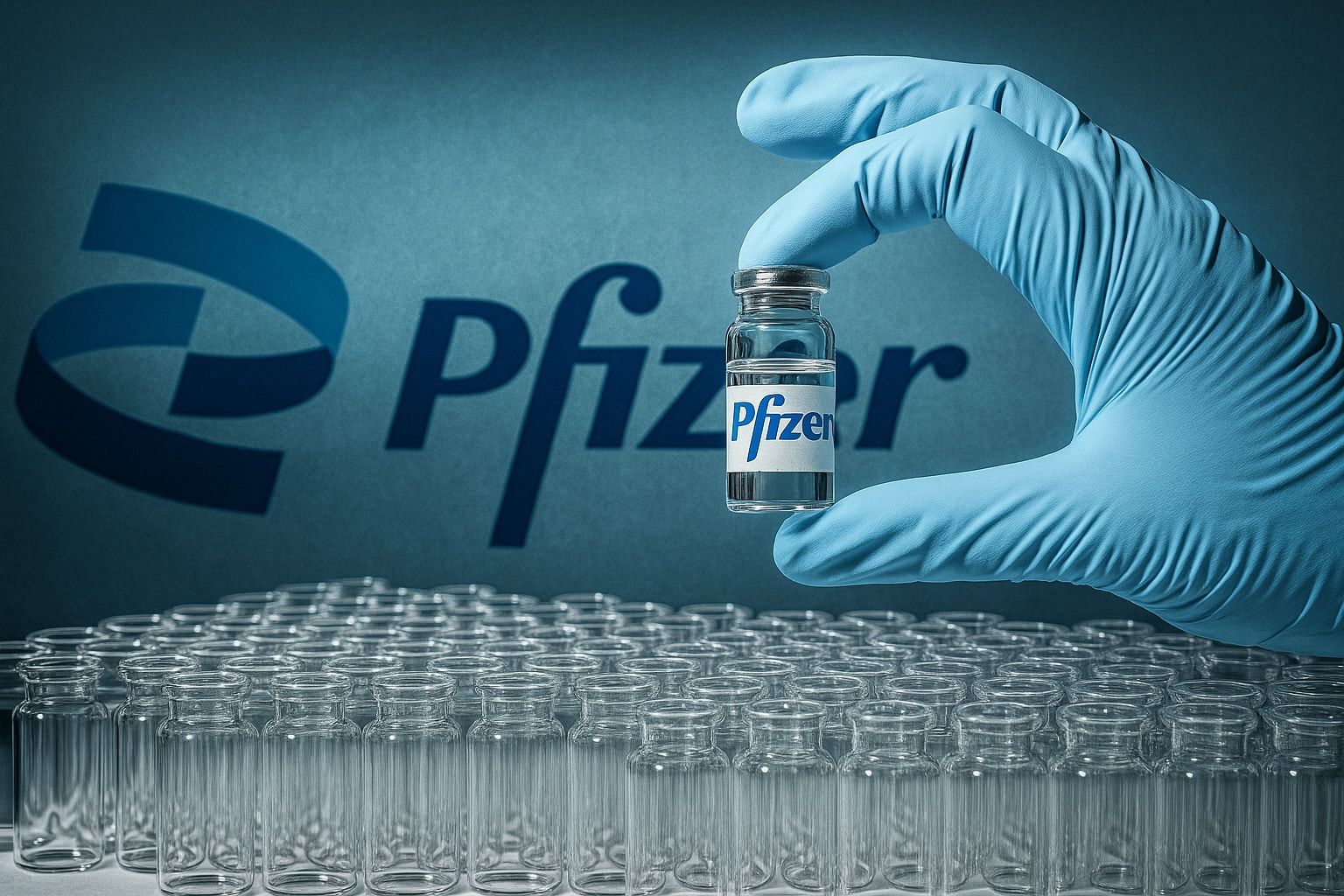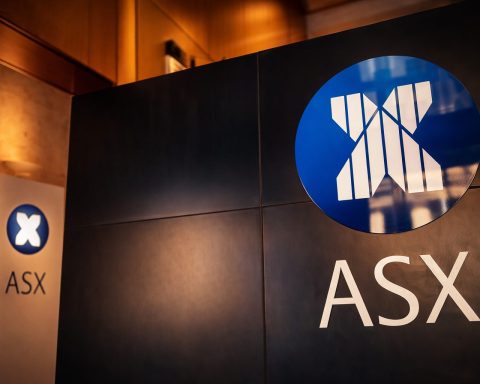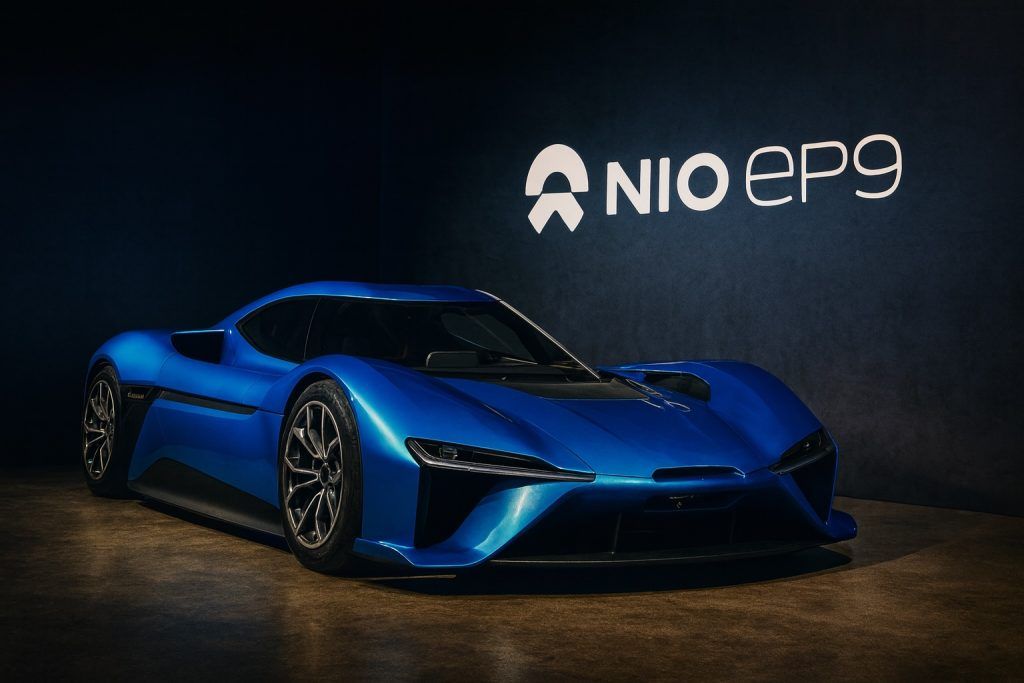Pfizer stock (NYSE: PFE) is trading higher today as investors digest a fresh batch of headlines: a planned sale of the company’s remaining stake in Covid-19 vaccine partner BioNTech, ongoing reaction to its $10 billion Metsera obesity-drug deal, and renewed debate around whether PFE’s rich dividend compensates for its strategic risks.
As of the latest quotes on Thursday, November 13, Pfizer shares are changing hands around $25.9, up roughly 1.4% on the day after trading between about $25.3 and $25.9 in today’s session. That puts the company’s market capitalization near $147 billion, with the stock still trading on a single-digit earnings multiple and yielding around 6.6–7% on a forward annual dividend of $1.72 per share. [1]
Below is a look at what’s moving Pfizer stock today, November 13, 2025, and how the latest news may shape the outlook for PFE investors.
Pfizer Stock Price Today: Modest Gain in a Volatile Week
After a choppy few weeks, Pfizer shares are edging higher today:
- Intraday range (today): roughly $25.26–$25.95 [2]
- Latest price: about $25.87, up around $0.36 or 1.4% versus yesterday’s close near $25.51 [3]
- Market value: approximately $147.1 billion [4]
- Recent momentum: up a few percent over the past month, but still down high single digits over the last year. [5]
Pfizer’s beta is well below 1, meaning the stock tends to move less than the broader market, and daily volatility is roughly in the 2–3% range. [6] That fits with how many investors now view PFE: as a slow-moving, income-heavy pharma name rather than a high-volatility growth stock.
Headline of the Day: Pfizer to Sell Its Remaining BioNTech Stake
The biggest fresh catalyst on November 13 is news that Pfizer plans to sell its remaining stake in Covid-19 vaccine partner BioNTech (NASDAQ: BNTX).
According to multiple reports, Pfizer is offering about 4.55 million BioNTech American depositary receipts (ADRs) via an overnight block trade, marketed in a price range of roughly $108–$111.70 per share. At the top end of that range, the sale could raise around $508 million for Pfizer. [7]
BioNTech shares came under pressure on the news, trading lower in pre-market and early-session action, as investors digested Pfizer’s decision to fully exit its equity position. [8]
Why This Matters for PFE Stock
The BioNTech stake sale is symbolic as much as financial:
- Capital redeployment: $500+ million is not transformative for a company of Pfizer’s size, but it adds to the pool of capital that can be directed toward buybacks, debt reduction, or new R&D and acquisitions.
- End of the Covid trade: Selling the last BioNTech shares reinforces the message that the Covid-vaccine windfall era is effectively over. Pfizer has been guiding the market to expect much lower Covid revenues and is trying to pivot investor attention toward its next generation of growth drivers. [9]
- Strategic clarity: Exiting BioNTech removes a non-core equity holding and simplifies the balance sheet at a time when investors are scrutinizing returns on capital more closely.
So far, the market appears to be taking the BioNTech news as mildly positive or at least consistent with Pfizer’s ongoing portfolio reshaping—PFE is up modestly today even as BNTX trades lower on the potential share overhang. [10]
Metsera Deal Still Looms Large Over Pfizer’s Story
Today’s trading also occurs against the backdrop of Pfizer’s recently clinched acquisition of Metsera, a clinical-stage biotech focused on obesity and cardiometabolic diseases.
Earlier this week, Reuters reported that Pfizer won a bidding war with Novo Nordisk by agreeing to pay $65.60 per share in cash up front, plus up to $20.65 per share in contingent value rights (CVRs), valuing Metsera at up to $10 billion. [11]
An amended merger agreement and subsequent commentary from analysts and Seeking Alpha contributors have emphasized: [12]
- Pfizer has made Metsera central to its obesity strategy, a high-stakes therapeutic arena where rivals like Novo Nordisk and Eli Lilly already enjoy a large lead.
- The earn‑out structure (CVRs) means not all of the $10 billion is guaranteed; future payments depend on Metsera’s pipeline hitting regulatory and commercial milestones.
- Some observers see the rich price tag as a sign of urgency—or even desperation—for Pfizer to build a new growth engine after Covid revenues and several blockbuster drugs face loss of exclusivity.
A separate Nasdaq‑syndicated article published today framed the Metsera deal as so pivotal that Pfizer was willing to outbid a formidable competitor, highlighting how essential this acquisition is to the company’s pipeline narrative. [13]
For PFE shareholders, Metsera is both an opportunity and a risk: if the obesity portfolio pays off, today’s valuation could look cheap; if it disappoints, the deal will be remembered as a costly misstep.
Earnings, Guidance and Valuation: Why Some Call PFE “Bond‑Like”
Under the headlines, Pfizer’s fundamentals remain a major part of the bullish and bearish debate.
Q3 2025 Results and 2025 Guidance
In early November, Pfizer reported Q3 2025 results that modestly beat earnings expectations:
- Q3 EPS: $0.87 vs. consensus around $0.79
- Revenue: $16.65 billion vs. expectations of $16.94 billion (a small top‑line miss)
- Net margin: roughly 16.8%
- Return on equity: about 21.4%
- Full‑year EPS guidance: $3.00–$3.15 per share, ahead of the roughly $2.95 that many analysts were expecting.
These numbers suggest that, even amid price pressure and Covid normalization, Pfizer remains solidly profitable and cash‑generative.
Cheap on Earnings, Rich on Yield
On today’s price around $25.9, Pfizer trades at roughly:
- ~8× normalized earnings, according to Morningstar-style valuation metrics
- A forward dividend yield around 6.6%, based on a projected annual payout of $1.72 per share
That combination—low P/E and high yield—has led some commentators to argue that Pfizer now trades more like a bond substitute than a typical growth stock.
In an article originally published yesterday and widely circulated today, Jim Cramer was quoted calling Pfizer’s stock level “unfathomable,” emphasizing that he sees a “7% yield with a great balance sheet and a lot of stuff in the pipe”and questioning why the market hasn’t re‑rated the shares higher after a decent quarter. Pfizer CEO Albert Bourla reportedly agreed that the stock is undervalued and pointed to progress on tariffs, Covid exposure and the obesity strategy.
What Analysts and Commentators Are Saying Today
Today, November 13, a mix of fresh analysis is circulating around PFE:
“Forget Pfizer?” Comparison to Rival Big Pharma
A widely read column syndicated by Nasdaq and Finviz this morning poses the question: “Should You Forget Pfizer and Buy This Magnificent Drug Stock Instead?” The piece compares Pfizer with Merck, noting:
- Pfizer offers the higher dividend yield and lower valuation, but faces significant patent expirations and integration risk from recent deals.
- Merck is framed as having a more dependable growth engine anchored by its blockbuster oncology franchise, making it potentially more attractive for conservative dividend investors despite a richer valuation.
The takeaway is not that Pfizer is uninvestable, but that some see better risk‑adjusted opportunities elsewhere in big pharma.
High‑Yield Healthcare Watchlists
At the same time, new Motley Fool research on high‑yield healthcare names highlights Pfizer as one of the sector’s top dividend payers in 2025, emphasizing the stability of its cash flows and the potential upside if its pipeline delivers.
Street Ratings and Targets
Recent research recapped in MarketBeat coverage today shows:
- Goldman Sachs reiterating a “neutral” rating with a $26 target price, near current levels.
- Sanford C. Bernstein maintaining a “market perform” rating with a $30 target, implying upside of around 15–20% from today’s price.
- Other firms generally clustering around hold or market‑perform ratings, reflecting the balance of yield support and strategic uncertainty.
In short, Wall Street is cautious but not overtly bearish; many analysts see Pfizer as fairly valued to modestly undervalued, with the Metsera integration and obesity pipeline performance as key swing factors.
Institutional Money: Fresh Positions in PFE
Today also brought disclosures of new institutional positions in Pfizer shares:
- First Western Trust Bank reported a stake worth about $1.11 million in PFE.
- Candriam S.C.A. disclosed the purchase of roughly 581,000 Pfizer shares, also filed today.
These aren’t massive holdings at Pfizer’s scale, but they add to a picture in which institutional investors are selectively adding exposure to the stock at current levels, rather than exiting en masse.
Global Angle: Pfizer India Earnings Surprise
While U.S.-listed PFE is the main focus for global investors, Pfizer’s Indian subsidiary, Pfizer Limited, delivered strong results that are making headlines in local markets today.
Key details from Q2 FY26 (July–September) for Pfizer India:
- Net profit: about ₹189 crore, up roughly 19.4% year-on-year
- Revenue from operations: approximately ₹642 crore, up around 9.1% YoY
- EBITDA growth: over 20% YoY, with margins expanding into the mid‑30s percent
- The stock in Mumbai rose between 1.5% and 6% intraday, hitting its highest levels since late October as trading volumes surged well above the 30‑day average.
For U.S. investors, these India results underscore that Pfizer’s global branded portfolio still has meaningful growth pockets, even as North American pricing comes under pressure. However, the Indian unit’s earnings have only a modest direct impact on the consolidated PFE numbers; the influence is more about sentiment and proof of brand strength in emerging markets.
Drug Pricing Deal With the U.S. Government: The Background Context
Today’s BioNTech sale and pipeline investments are happening in a new U.S. pricing environment that matters greatly for Pfizer’s long‑term valuation.
On September 30, 2025, Pfizer announced a “landmark agreement” with the Trump Administration to lower drug costs for American patients while retaining incentives for innovation.
Key elements of the deal include:
- A “most‑favored‑nation” pricing‑style framework, aligning many U.S. prices more closely with those in other developed markets.
- Pfizer’s participation in a direct purchasing platform (“TrumpRx.gov”), allowing U.S. patients to buy certain Pfizer medicines at significant discounts—on average around 50% lower, and in some cases as much as 85% lower, than prior prices.
- A three‑year grace period on potential tariffs for Pfizer products under Section 232 investigations, contingent on moving more manufacturing to the U.S.
CEO Albert Bourla has argued that the agreement provides much‑needed certainty on tariffs and pricing, which he says had weighed heavily on pharma valuations. In theory, that clarity should support long‑term capital planning and may help justify the company’s aggressive investment in areas like obesity, oncology and immunology.
For investors, however, the math is not straightforward: unit prices are heading lower, even if volume and policy stability improve. Pfizer must therefore lean harder on pipeline innovation, scale efficiencies and global growth to maintain earnings and fund its dividend.
Key Risks and What to Watch Next for Pfizer Stock
Looking ahead from today’s action, several themes will likely determine where PFE goes from here:
- Execution on Obesity and Cardiometabolic Drugs
- Metsera is now central to Pfizer’s attempt to compete in one of the most lucrative markets in pharma. Positive clinical data, regulatory progress and commercial launch execution will be closely watched.
- Integration of Recent Deals
- Beyond Metsera, Pfizer has made a series of acquisitions in recent years. Successfully integrating these assets—and proving they can offset looming patent cliffs—remains a major challenge.
- Impact of U.S. Drug‑Pricing Reforms
- The TrumpRx/most‑favored‑nation framework should gradually show up in Pfizer’s U.S. pricing mix. Investors will want to see whether higher volumes, cost discipline and new products can preserve margins.
- Covid Revenue Normalization
- Covid vaccines and treatments are now a much smaller part of Pfizer’s story, but lingering uncertainty about booster demand and variant‑specific products still affects sentiment.
- Dividend Sustainability
- With a yield above 6.5%, the dividend is both a key attraction and a source of scrutiny. As long as free cash flow and earnings comfortably cover the payout, the yield acts as a floor under the stock; any sign of stress could have the opposite effect.
Bottom Line: Why PFE Is Back in the Spotlight Today
On November 13, 2025, Pfizer’s share price is quietly grinding higher while some very non‑quiet developments unfold:
- The company is cashing out of BioNTech, drawing a line under the Covid‑vaccine boom and freeing up around half a billion dollars in capital.
- It is doubling down on obesity and cardiometabolic medicine via the high‑stakes Metsera deal, even as analysts debate whether the price tag is justified.
- Income investors are eyeing a 6%+ dividend and sub‑10× earnings multiple, while commentators like Jim Cramer publicly question why the stock trades at such a depressed valuation.
- Global operations, including a strong quarter from Pfizer’s Indian arm, show that the company still has growth engines outside the U.S. even as domestic pricing tightens.
For now, the market’s verdict is cautious optimism: Pfizer stock is up modestly today, but far from euphoric. Whether PFE proves to be a high‑yield value trap or a patient investor’s opportunity will depend on execution in the lab, in the clinic and in Washington over the next few years.
This article is for informational purposes only and does not constitute investment advice or a recommendation to buy or sell any security. Always do your own research or consult a licensed financial adviser before making investment decisions.
References
1. www.intelligentinvestor.com.au, 2. www.intelligentinvestor.com.au, 3. www.intelligentinvestor.com.au, 4. stockanalysis.com, 5. stockanalysis.com, 6. www.tradingview.com, 7. www.bloomberg.com, 8. www.bloomberg.com, 9. www.fool.com, 10. de.investing.com, 11. www.reuters.com, 12. investors.metsera.com, 13. www.nasdaq.com








